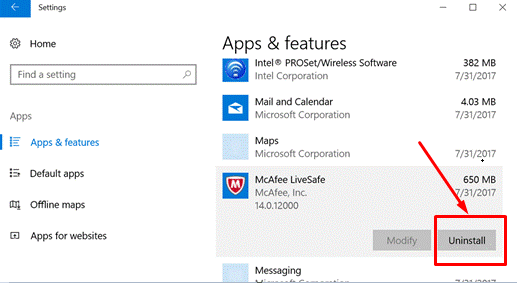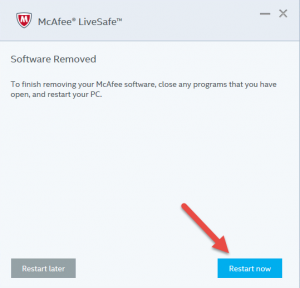


Let’s remove the first one, as you might consider keeping WebAdvisor if you aren’t using a Web browser with built-in malicious site warnings.ĭo that by clicking on the name “McAfee LiveSafe” and two buttons will appear:ĭon’t click on Modify. There’s the program – and its helper companion McAfee WebAdvisor. Once it launches, type “ mcafee” into the little search box in the middle of the window itself: Click on it or tap it to launch that particular system setting. You can see the first match is what you want: “Add or remove programs”. To remove McAfee, quit the program and go to the Windows 10 search box and type in “ remove“: One of our Windows 10 systems has an expired subscription, which is subtly indicated when the program launches:Īt least there’s no skull and crossbones or “YOUR COMPUTER IS almost INFECTED!” messages, right? Still, yeesh.

It’s no wonder people get fed up! Unlike many anti-virus programs one great benefit of McAfee LiveSafe is that it’s quite straightforward to remove and you don’t even need to use a special uninstall tool to do so! Anti-virus went from being easily forgotten behind-the-scenes software to something that popped up multiple times a day with warnings and other anxiety-provoking messages. That’s when the anti-virus companies started to get more in your face about threats, protection, upsells to other software they sell and more. Suddenly the picture changed because you no longer needed to pay for expensive annual subscriptions to keep your computer safe from most all threats.

Then Microsoft finally realized that as the creators of Windows, it really needed to be in the picture too. Until a few years ago, anti-virus and anti-malware / spyware software was the exclusive purview of third party developers, companies that were on a definite treadmill, a weird symbiotic relationship with hackers where the bad guys would innovate new ways to sneak onto your computer and they’d have to come up with ways to identify and stop the malware.


 0 kommentar(er)
0 kommentar(er)
